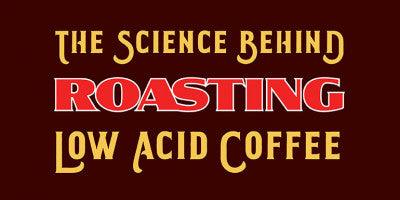
The Science Behind Slow Roasting Low Acid Coffee
The Science Behind Slow Roasting Low Acid Coffee
As I mentioned in the previous post, there are many different types of heat that must be managed. Convection, conduction, and radiant heat and their relation to each other and how the heat relates to time marks in the profile, is a hallmark of slow roasting. It is not just that during a roast certain milestones are achieved on the profile. The question is when did the milestones occur?
So how does slow roasting actually reduce acid? According to the science, reduction of Chlorogenic acid can occur when coffee beans are exposed to temperatures above 400ºF. However, it is just not the exposure to 400ºF temperatures alone that reduces the acid. The duration of the roast is also important. While many modern roast profiles may achieve 400ºF on their profile for the air temperature of the roast (which is a measurement of the temperature in the roaster drum chamber), many roast profiles never achieve 400ºF for their bean temperature (which is the actual temperature the beans reach during the roast). While that is certainly one way of roasting coffee, it does not yield low acid coffee.
While some roast profiles may easily eclipse 400ºF and have drop temperatures to finish the roast at 450ºF or more for their darkest roasts, the duration of the roast is typically not sufficient to adequately minimize the levels of Cholorogenic acid necessary to yield a truly low acid coffee. However, you might notice that some coffee companies try to offer their dark roasts as low acid, because it takes them an extra couple minutes to achieve a darker roast , the result is only a mild reduction in acid. Plus, you also have to enjoy drinking really dark roasts and still be able to tolerate a far amount of acid.
One of the marks of a slow roast, is that slow roasted coffee can be roasted from light to medium to dark and in between. Slow roasted coffee does not have to be dark roasted. Slow roasting allows the roaster to produce just about any color coffee on the roast spectrum from light to dark and each coffee will have significantly lower acid than even the darkest roasts of most coffee companies.
Temperature and time are critical to slow roasting. If you do not have sufficient heat and time, you do not have a low acid coffee.
-Mavericks